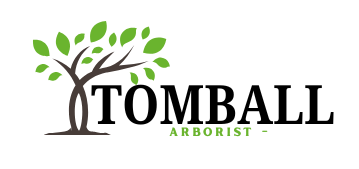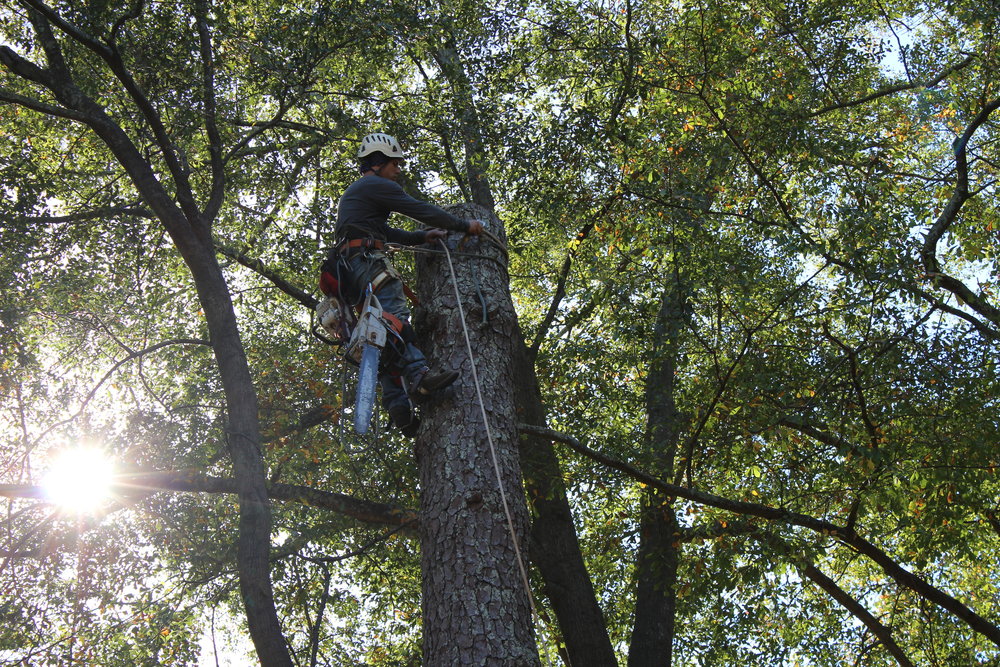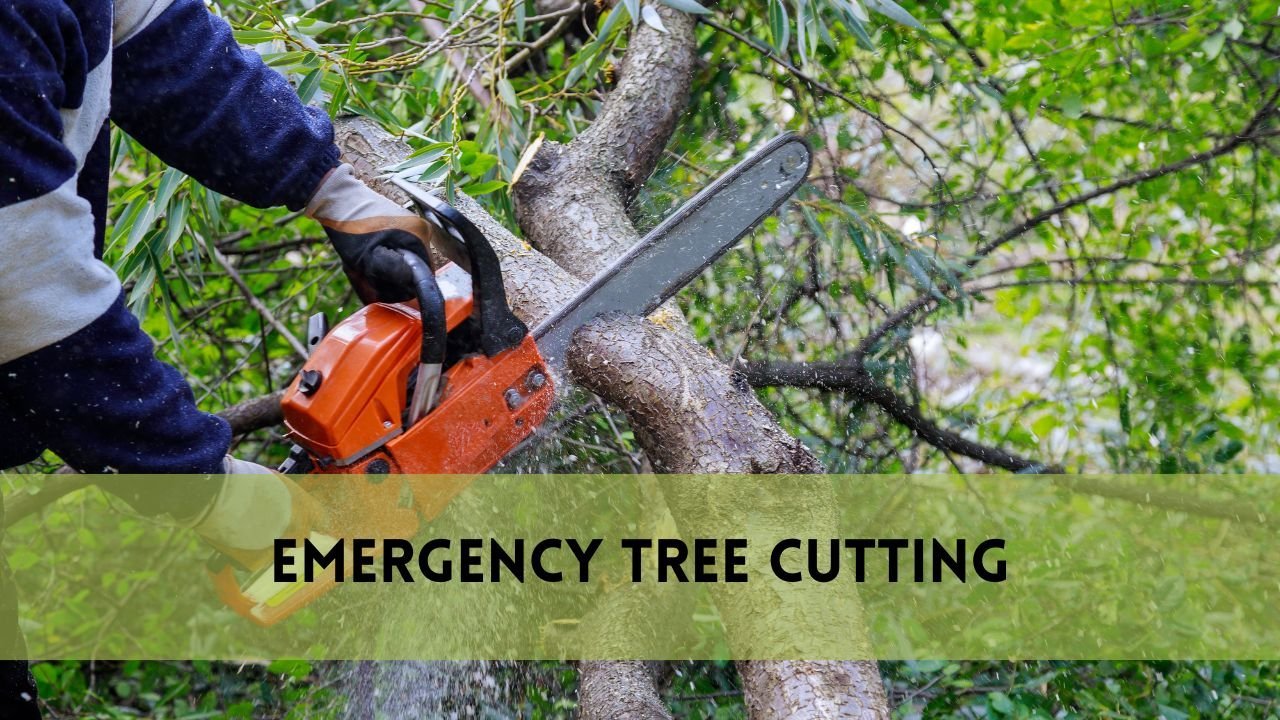Maintaining the vibrant allure and well-being of palm trees in your landscape often involves contending with encroaching ferns. These lush and persistent invaders can detract from the beauty of your palms while sapping vital nutrients. In this guide, we’ll outline a step-by-step approach to effectively remove ferns from palm trees, ensuring their continued health and aesthetic appeal. Whether you’re a seasoned gardener or just beginning your journey into tree care, these simple yet essential techniques will help you restore the grandeur of your palm trees by bidding farewell to unwanted fern companions.
Why Palm Tree Ferns Need to Be Removed?
Overgrown ferns may cover up the palm tree’s attractiveness and make it less aesthetically appealing. They can be removed to restore the palm’s exquisite look.
- Ferns can compete for nutrients, water, and sunshine with palm trees, thereby harming the palm’s general health and development.
- Fern growth can generate a damp microenvironment that can promote the development of fungal infections, which can affect the palm tree indirectly.
- Large, overgrown ferns may add weight to the fronds of a palm tree, causing them to droop or bend abnormally and disrupting the tree’s equilibrium.
- Heavy fern growth can create a safety issue in windy or stormy weather, as fronds or fern debris may fall, endangering persons and property.
Step-By-Step Guide to Remove Ferns from Palm Trees
Tools required
- Garden gloves
- Safety goggles
- Pruning shears
- Small hand shovel or trowel
- Trash bag or compost bin
- Put on your garden gloves and safety goggles to protect yourself from any allergens or irritants.
- Examine the palm tree’s base and look for the ferns that have developed around the roots.
- Use pruning shears to trim the fern fronds and foliage close to the base of the palm tree.
- During this process, do not harm the palm tree’s roots or trunk.
- Carefully dig around the ferns’ bases with a tiny hand shovel or trowel. The purpose is to expose the fern roots, which frequently develop around the roots of palm trees.
- Once the fern roots have been revealed, gently pull the ferns out, removing as much of the root system as possible. Take care not to harm the palm tree’s roots or stir the soil too much.
- Removing ferns from the palm tree roots helps maintain the palm tree’s health and aesthetics, ensuring that it can thrive without competition for resources. Regular monitoring and removal may be necessary to keep the ferns in check.
By Using Boiling Water
- Boiling water can be used as a cheap, natural herbicide. Boiling water may be poured over a plant’s root system and leaves to kill it in a few of days without leaving a harmful residue in the soil.
- Depending on the size of the fern, you should need 1-2 gallons (3.8-7.6 L) of water to kill it. While most plants will only require one pour of water, bigger or more obstinate ferns may require a second.
- To avoid burns and other injuries, use caution when handling hot water.
By Using Salt Water
- Table salt and rock salt are both effective herbicides, especially when dissolved in water. Saltwater is a natural, effective way to destroy the plant’s root system
- I make salt water, combine 1 part salt or 8 parts water in a solution. Depending on the size of the plant, combine 1-2 gallons (3.8-7.6 L) of saltwater solution.
- If you want to replant a new fern or shrub in that place, avoid using salt since salt is harmful to developing plants.
By Using Vinegar
- Natural herbicides include white vinegar and industrial grade vinegar. However, unlike certain herbicides, you may need to use the herbicide on a daily basis until the root system dies completely.
- Because industrial grade vinegar can irritate the skin, eyes, or use white vinegar as a safer option.
- Spray the fern with 12-1 gallon (1.9-3.8 L) of vinegar to effectively destroy its root system. Your fern should only require 1-2 sprays and will die within a few days of being sprayed with the solution.
By Using Chemical Herbicide
- Herbicides, both natural and synthetic, can cause respiratory, ocular, and skin irritation. To protect yourself, put on safety goggles, a mask, and gardening gloves before applying the herbicide.
- If using a store-bought chemical, check its packaging for specific application instructions.
- If the first treatment does not kill the fern, reapply the pesticide everyday or try another herbicide.
- Herbicides designed to destroy ferns or shrubs can also harm or kill other plants. Apply herbicide just to the fern you wish to destroy and the ground directly beneath it.
Prevent the Growth
To assist avoid fern growth, palm plants such as coconuts and date palms (phoenix dactylifera) should be given appropriate sunlight and water. Pruning dead and damaged palm fronds can also assist palm tree fern development.
Chemicals, such as insecticides, should be avoided since they can harm palm plants and exacerbate fern growth. This will help the palms live and thrive.
Palm trees are a popular pest target, so monitor them often for indications of infestation and physically remove any bug infestations if required. Palm tree fertilization can assist enhance their general health and prevent fern development.
Do ferns spread on their own?
Ferns may, in fact, propagate on their own. Ferns reproduce through spores, which are little, dust-like particles found on the undersides of their fronds. These spores can develop into new fern plants if they released into the environment and the conditions are favorable.
Ferns can also propagate via their rhizomes, or subterranean stems. Rhizomes can grow horizontally and produce new fern shoots. Natural dispersion can result in a steady increase of fern populations in the wild or in garden landscapes.
When Is the Best Time to Remove Fern from Palm Trees?
The best time to remove ferns from palm trees is during the dormant or cooler seasons, typically in late winter or early spring.
During the dormant season, both the palm tree and the ferns are less active in terms of growth and flowering. This makes it easier to spot the ferns and remove them without disturbing new palm growth.
Conclusion
Finally, fern removal from palm trees is an important aspect of palm tree management to guarantee their aesthetic appeal, health, and safety. You may efficiently manage fern populations surrounding your palm tree by taking the necessary actions, such as selecting the best time for removal, using protective clothing, reducing fern growth, exposing and carefully plucking out fern roots, and properly disposing of them.
Regular monitoring and removal during the dormant or colder seasons helps to preserve the palm’s health and guarantee it thrives in the absence of competition from undesirable plants. This proactive strategy adds to a more beautiful and healthy palm tree environment.





